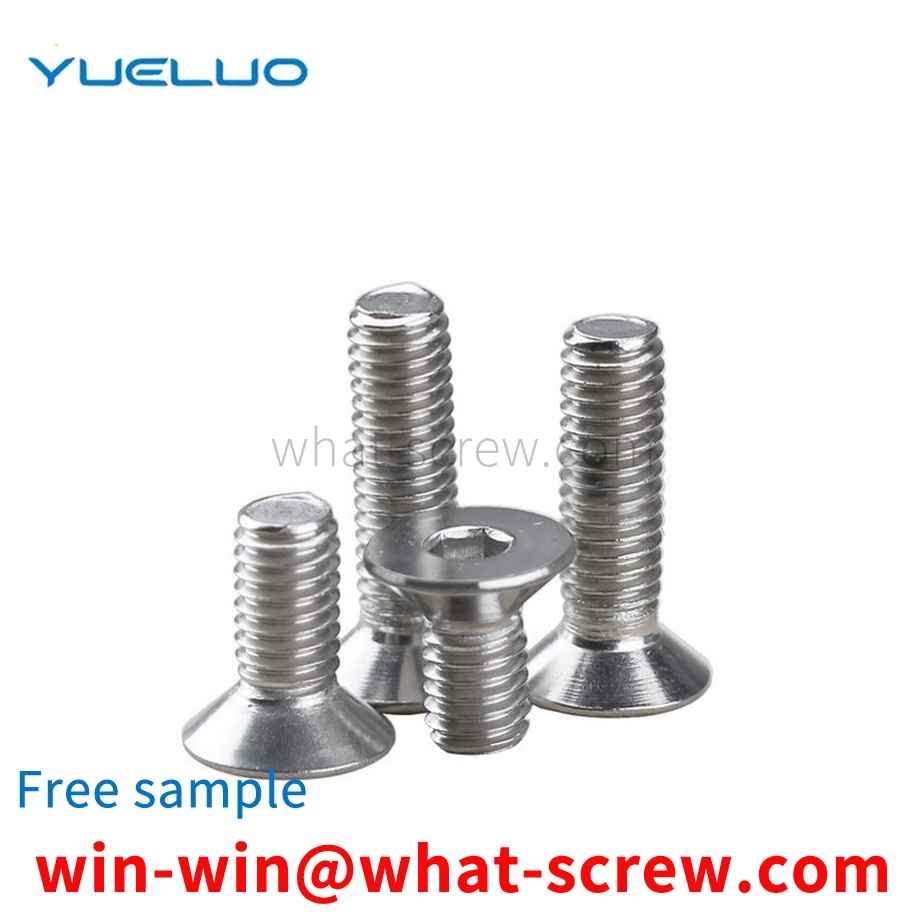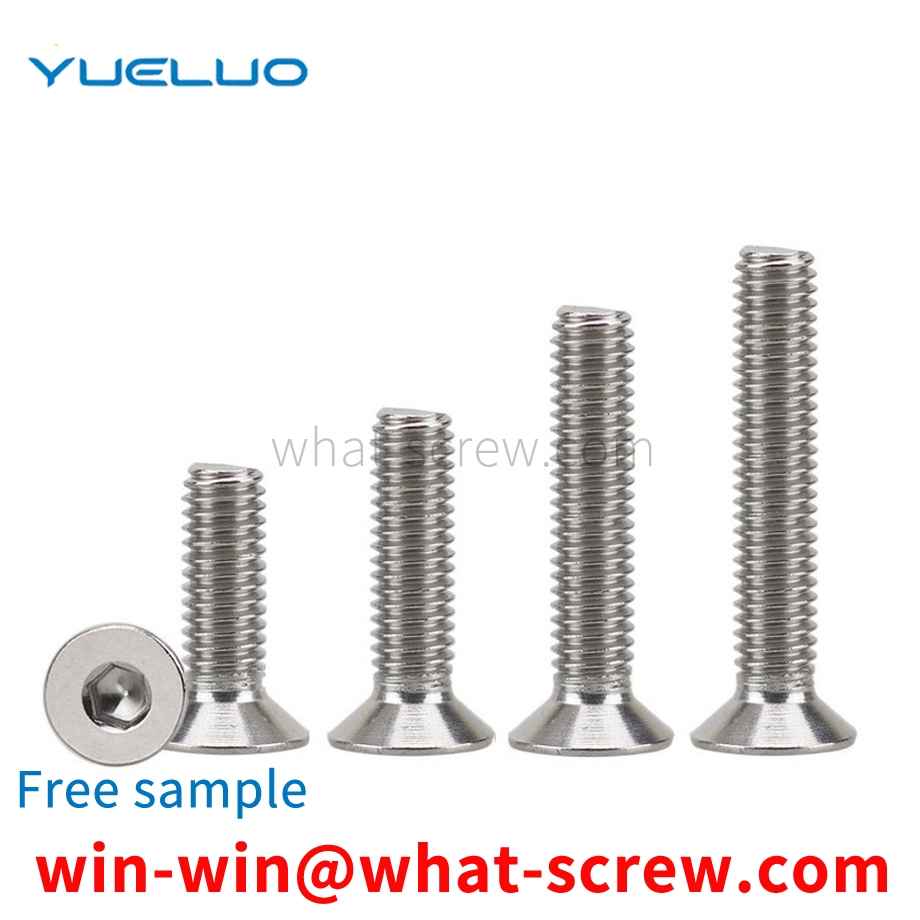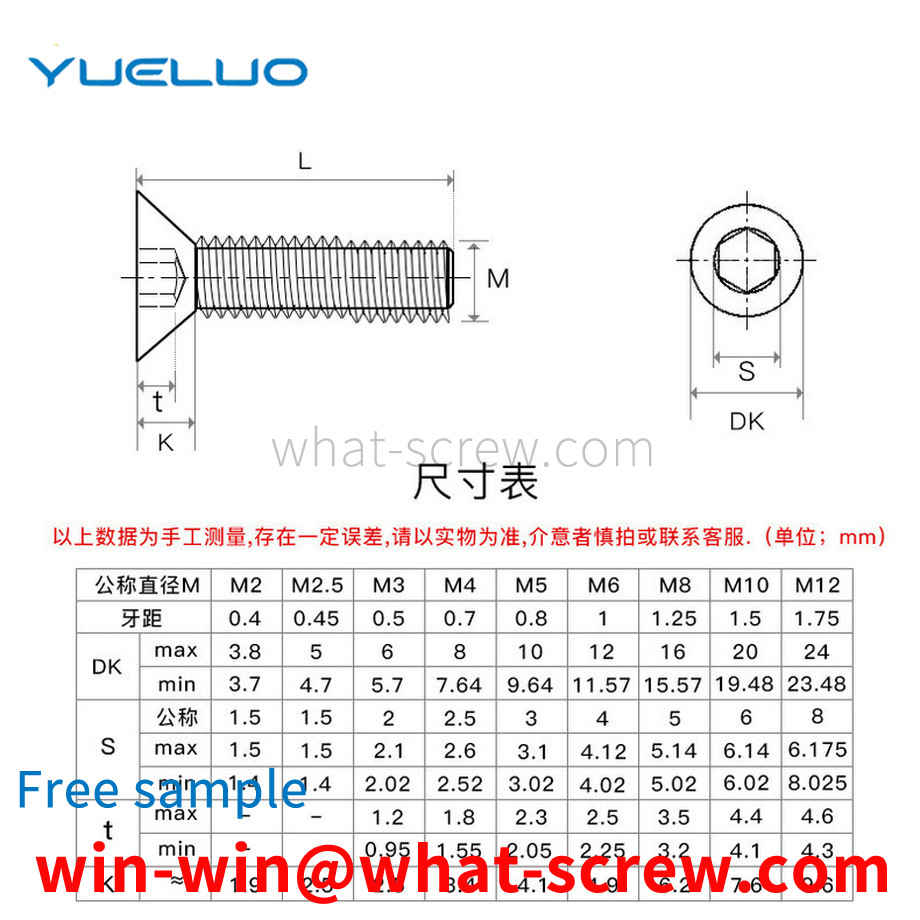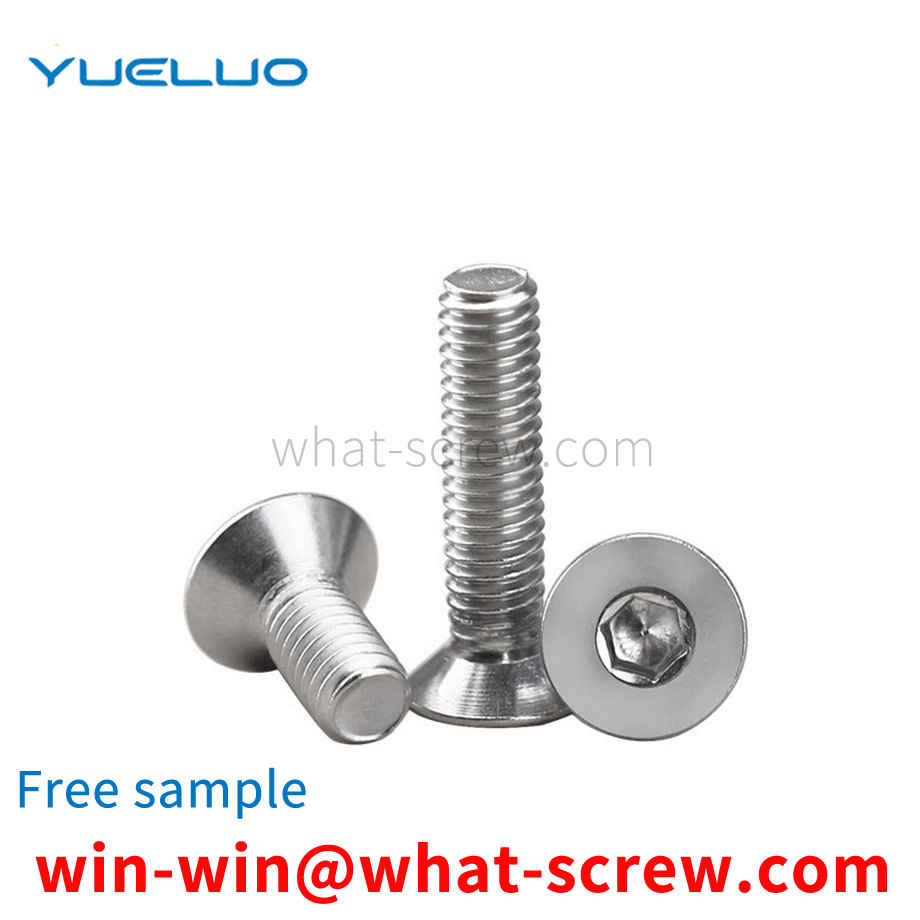What is the tolerance range of precision screws?
What is the tolerance range of precision screws?
Service Hotline
+86760-8787 8587We have more than ten years of experience in screw industry production. The main products are: switch socket panel bolts, quenched black standard teeth, DIN7349, spring washer standard GB93-93, GB70.2 stainless steel screws, hardened iron countersunk head inner and outer teeth nuts, speakers Nuts, narrow-sided flat washers, copper lug terminals, 889.1 nylon lock nuts, copper wing nuts, set combination/screw nuts, black flat head bolts, carbon steel step bolts, handwheel stainless steel hand tighten nuts and other fasteners, Due to the different materials and specifications of the products, the prices are also different, please contact us if necessary.


When fixing the centrifugal fan, since the gaskets, washers and nuts are separate parts, many parts are used in the whole process, and it is easy to miss the installation of parts; The volume of the parts is relatively small, and it is not easy to remove them when they are transferred into the air conditioner through the gap of the centrifugal fan blades, resulting in foreign bodies in the machine.

The nut specification table is to unify all kinds of nuts in detail, and use the table to subdivide some specifications of the nuts. There are many types of nuts, and there are nuts of different materials. Each type of nut has different specifications, and each type of screw also has its mechanical properties and functions. · Square nut grade C GB 39-88 · Hexagonal nut grade C GB /T41-2000 · Hexagonal thick nut GB 56-88 · Wing nut GB 62-88 · Ring nut GB 63-88 · Combined cap nut GB 802 -88 · Spherical Hex Nut GB 804-88 · Fastening Nut GB 805-88 Knurled High Nut GB 806-88 · Knurled Thin Nut GB 807-88 · Small Hexagonal Extra Flat Fine Thread Nut GB 808-88 · Embedded Round nut GB 809-88 · Small round nut GB 810-88 · Round nut GB 812-88 End hole round nut GB 815-88 · Side hole round nut GB 816-88 · Slotted round nut GB 817-88 · Type 1 non-metallic insert hexagonal lock nut GB /T 889.1-2000 · Type 1 non-metallic insert hexagonal lock nut with fine thread GB /T 889.2-2000 · Cap nut GB 923-88 · Type 1 hexagonal nut GB / T 6170-2000 · Type 1 Hexagonal Nuts with Fine Thread GB /T 6171-2000 · Hexagonal Thin Nuts GB /T 6172.1-2000 · Non-metallic Insert Hexagonal Locking Thin Nuts GB /T 6072.2-2000 · Hexagonal Thin Nuts with Fine Pitch GB /T 6173-2000 · Hexagonal thin nuts without chamfer GB /T 6174-2000 · Type 2 hexagon nuts GB /T 6175-2000 · Type 2 hexagon nuts with fine pitch GB /T 6176-2000 · Hexagon flange nuts GB / T 6177.1-2000 · Hexagon flange face nuts with fine pitch GB /T 6177.2-2000 · Type 1 hexagon slotted nut - Grade A and B GB 6178-86 · Type 1 hexagon slotted nut - Grade C GB 6179-86 · 2 Type Hexagonal Slotted Nuts-A and B Grades GB 6180-86 Hexagonal Slotted Thin Nuts-A and B Grades GB 6181-86 Type 2 Non-metallic Insert Hexagonal Lock Nuts GB/T 6182-2000 Non-metallic Inserts Hexagon flange face lock nuts for non-metal inserts GB /T 6183.1-2000 · Non-metallic insert hexagonal flange face lock nuts with fine thread GB /T 6183.2-2000 · Type 1 all-metal hexagonal lock nuts GB /T 6184-2000 · Type 2 all-metal hexagonal lock nut GB /T 6185.1-2000 · Type 2 all-metal hexagonal lock nut fine pitch GB /T 6185.2-2000 · Type 2 all-metal hexagonal lock nut Grade 9 GB /T 6186-2000 · Full Metal Hexagon Flange Face Lock Nuts GB /T 6187.1-2000 · All Metal Six Angle flange face locking nut fine pitch GB /T 6187.2-2000 · Type 1 hexagon slotted nut with fine pitch A and B grades GB 9457-88 · Type 2 hexagonal slotted nut with fine pitch A and B grade GB 9458-88 · Hexagonal Slotted Thin Nut Fine Thread Grade A and B GB 9459-88 · Welded Square Nut GB /T 13680-92 · Welded Hexagonal Nut GB /T 13681-92 · Flat Head Rivet Nut GB /T 17880.1-1999 · Countersunk Head Rivet Nut GB /T 17880.2-1999 · Small countersunk head rivet nuts GB /T 17880.3-1999 · 120° small countersunk head rivet nuts GB /T 17880.4-1999 · Flat head hexagonal rivet nuts GB /T 17880.5-1999 · Hexagonal nuts for precision machinery GB /T 18195-2000


As we all know, whether it is the necessities in people's life or the equipment in industrial production, there will be a structure of screws and screw holes on it. This kind of structure that can simply fix some components together has been widely used in various fields. For the installation and removal of screws, people invented manual screwdrivers, and then to electric screwdrivers and so on. For manual screwdrivers, the operator needs to manually install or remove the screws. When encountering small screws, it can still handle it. When encountering large screws, due to people's limited strength, they may not install the screws in place, so it was invented. Electric screw. When installing the screw, which is widely used in the market, the operator needs to hold the screw handle, fix the screw on the screw port, and then align the screw with the corresponding screw hole for screwing. The disadvantage of this kind of screw is that it is heavy in quality and laborious to operate, and secondly, the operator will be injured due to operating errors, and the consequences are extremely serious. In view of this deficiency, people fix the screws on a work frame, so that before installing the screws, the operator only needs to adjust the screws to the designated position, and then the screws can be installed, which is convenient and simple. However, there are still potential safety hazards. In the process of adjusting the screw, it is still possible that the power of the screw may be turned on by mistake due to operating errors, resulting in injury to the operator. In view of the above-mentioned defects, it is necessary to invent a screw installation method with an anti-missing function.

Although this structure can prevent the shaft from rotating radially to a certain extent, it also has some obvious defects: firstly, the positioning block needs to be opened during processing, and secondly, the opening of the positioning block needs to be opened. After the deformation, the contact between the positioning block and the shaft becomes line-to-line contact, so that the contact area between the positioning block and the shaft is reduced, and the force generated to overcome the radial rotation of the shaft is correspondingly changed. less, so there is a risk that the shaft can turn radially.

The above content is uploaded by Yueluo or the Internet. If there is any copyright issue, please contact [email protected].

What is the tolerance range of precision screws?

How to choose the right stainless steel screw manufacturer?

Why is there an R angle under the head of the hexagon head s...

We have more than ten years of production experience in the ...

We have more than ten years of production experience in the ...

We have more than ten years of experience in screw industry ...

We have more than ten years of experience in screw industry ...